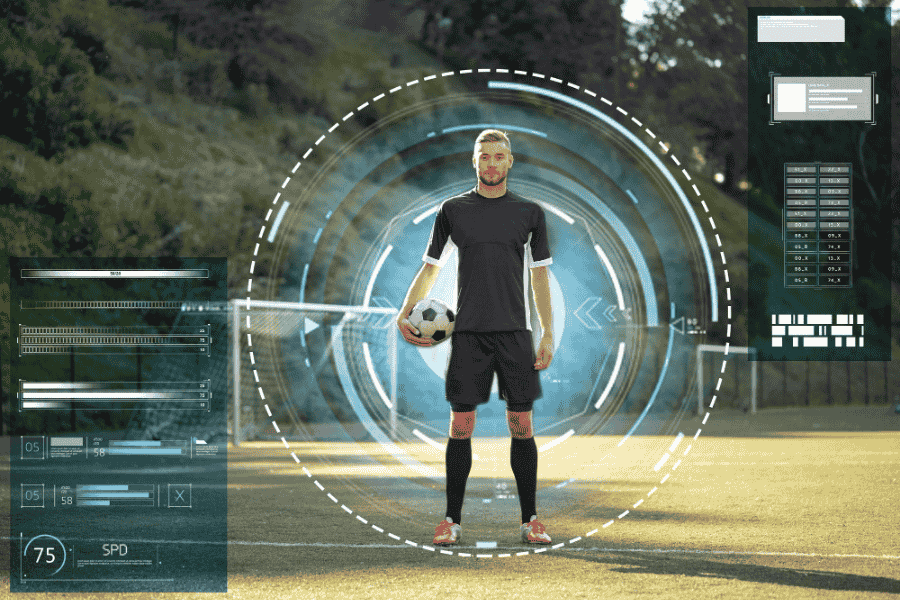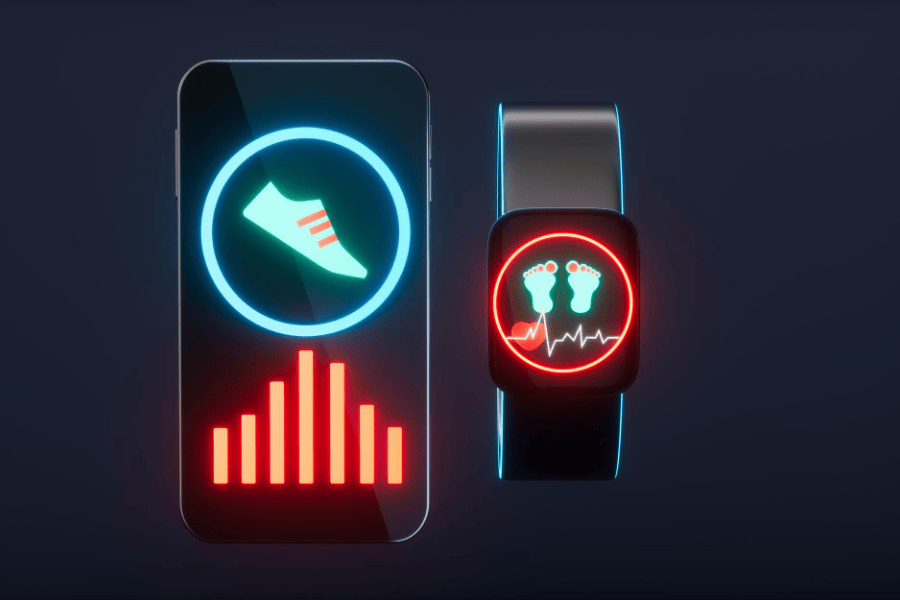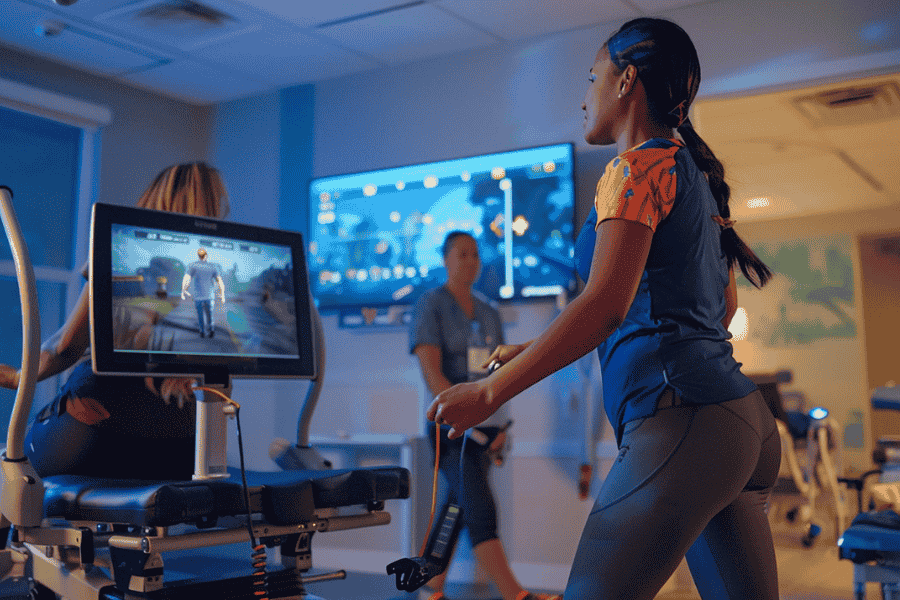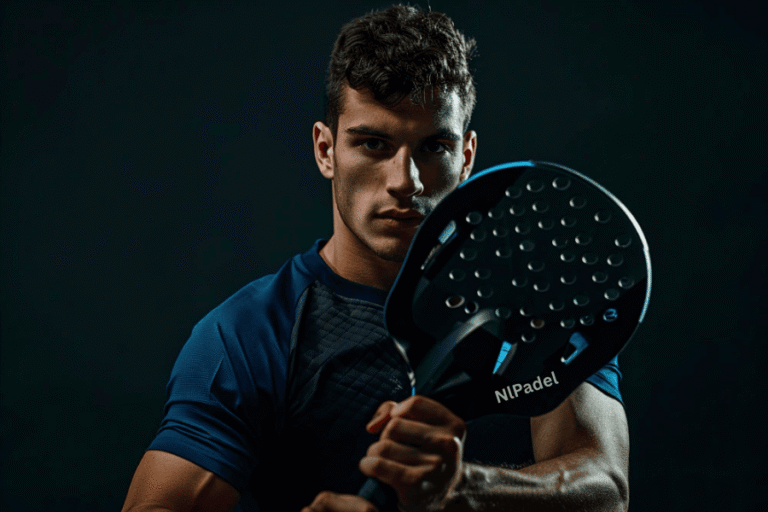Over the past decade, padel has evolved from a niche sport played on a few courts in Spain, Latin America, and beyond into one of the fastest-growing games in the world. With its unique blend of tennis-style rallies, squash-like walls, and a social format that feels almost irresistible, it has drawn players of all ages. The Netherlands has especially embraced the sport with remarkable enthusiasm, leading to explosive growth in numbers, court construction, and a rapid expansion of interest.
Still, a gap has emerged between those simply playing for fun and those seeking to compete at higher levels, where traditional coaching methods though effective no longer meet the needs to maximize physical, tactical, and psychological potential. Here enters nlpadel, a truly revolutionary training and performance framework that merges Neuro-Linguistic Programming (NLP), Artificial Intelligence (AI), wearable technology, and neuroscience. More than a coaching style, it is a system built to optimize mental, strategic aspects, and offer a blueprint for creating mentally resilient, data-driven athlete development for the future.
What is NLpadel?
nlpadel is an integrated approach that redefines performance in padel by using a modern methodology where players connect the worlds of sports, psychology, and NLP with data, analytics, AI, and machine learning. Through real-time physical monitoring supported by wearables, and scientifically proven neuroscience techniques, it helps strengthen mental resilience under competitive pressure.
The focus on tactical decision-making, data-driven insights, and personalize training allows for maximum skill acquisition, injury prevention, and the chance to build strong player communities where shared feedback and systems play a key role. Unlike traditional drills or match strategy, nlpadel highlights the mind-body-technology triangle, ensuring that athletes grow across all dimensions of development.
The Evolution of NlPadel
The Worldwide Growth of Padel
Originating in Mexico in the late 1960s, padel remained relatively unknown outside Latin America and Spain until the 2000s, but in the last five years its growth has skyrocketed, driven by an Accessible learning curve, a Social play format, and low space requirements when compared to tennis. In the Netherlands, the sport has been seen with a remarkable 200% increase in registered players within just three years, with projections showing well over 1,000 active courts by 2025.
Modern Sports and Technology: Parallels with Tennis and Squash
In modern sports, from football to racket games like tennis or squash, technology has completely transformed the way athletes train and compete. With AI and advanced analytics, it is now possible to predict risks of injury, analyze metrics in real-time, and design optimal training regimens that boost performance. Just as a precise Formula guides decision-making in 1 race car adjustments, the same logic applies here—where data shapes how players move, react, and improve. These tools not only support smarter preparation but also ensure that every move is guided by clear evidence, helping players reach their peak without unnecessary setbacks.
How NLP Transforms Athletic Performance Through Real Sports Applications
In padel and other sports, many elite athletes rely on NLP (Neuro-Linguistic Programming) combined with AI and neuroscience to overcome mental blocks, build confidence, and improve focus and consistency during intense competition. This mix gives a psychological edge in fast-paced, tactical settings where even small adjustments matter. By training the mind alongside the body, players learn to channel energy into performance rather than stress, showing how advanced methods can turn preparation into a powerful tool on the court.
The Four Pillars of NlPadel
Neuro-Linguistic Programming for Peak Padel Performance
At the heart of nlpadel is NLP, which rests on three core components: Neuro, Linguistic, and Programming. These shape how players make sense of the world through their senses, use language to express their experiences, and form patterns of behavior that develop over time in padel. Practical drills encourage athletes to visualize success, spend time mentally rehearsing shots and situations, and anchor confidence states with physical or verbal cues that trigger peak performance. By learning to reframe mistakes, manage self-talk, and replace negative chatter with constructive dialogue, they can stay present under pressure while preventing anxiety from disrupting play. For example, a player who consistently misses easy volleys might use NLP’s anchoring technique, pressing the racket grip during practice and visualizing perfect volleys to recreate the right state in a match.
Smart Data Analytics with AI & Machine Learning

Nlpadel’s analytics system combines footage, tracking sensors, and wearables to provide deep insights into the accuracy of every shot, whether forehand or backhand. It also measures movement efficiency by detecting wasted steps, positioning errors, and opponent analysis, even predicting likely shots. With tactical recommendations based on past data, players gain benefits beyond subjective coach feedback. Training sessions now target actual weaknesses rather than perceived ones, making opponent preparation more science-backed. This flow of reports helps players rely solely on objective patterns, while feedback can be shaped into precise strategies.
Wearable Tech and Real-Time Player Monitoring

In modern training, wearables measure heart rate variability (HRV) as a key recovery indicator, track reaction time vital for intercepting fast shots, and even capture jump height to show how it correlates with explosive power in smashes. Beyond physical data, cognitive load is monitored, detecting fatigue and revealing how devices sync with AI platforms, allowing players to see correlations between body strain and decision-making errors. Coaches can then adjust accordingly, helping players use this system to find balance between endurance and tactical precision.
Neuroscience Principles Driving Mental & Physical Mastery
The final pillar draws on neuroscience research which shows how neuroplasticity enables players to rewire motor skills faster through targeted practice. Mirror neuron activation helps athletes improve by watching high-level play, while cognitive load management is vital to prevent decision fatigue during late matches. By applying principles from brain science, nlpadel training ensures mental sharpness from the first serve to match point. Tools here do not just track physical numbers; they guide players in building skills that last, boosting both tactical understanding and psychological resilience.
Step-by-Step: How NlPadel Improves Performance
NlPadel transforms padel training by combining AI, NLP, wearable tracking, and real-time data analysis. This step-by-step process ensures players improve their performance both on and off the court.
Pre-Match Preparation
- Targeted warm-ups customized with wearable data.
- AI analysis of the upcoming opponent to predict strategies.
- NLP visualization sessions that prepare the mind for focus and clarity.
- Tactical reminders given before the match to set the right approach.
In-Match Execution
- Smart wristbands and earpieces deliver real-time feedback during play.
- Live statistics guide quick adjustments and smarter decisions.
- Ongoing match insights help players adapt their strategy immediately.
Post-Match Review
- Video breakdown and AI-generated heatmaps highlight strengths and weaknesses.
- Performance points are analyzed for tactical and technical growth.
- NLP debriefs to reinforce confidence and turn mistakes into learning.
Long-Term Growth
- Monthly progress reports track development over time.
- Adjusted training cycles ensure players keep advancing.
- Focus on continuous improvement through structured sessions and feedback loops.
Benefits of nlPadel
The benefits of nlPadel go beyond the court, combining mental sharpness, physical strength, and strategic growth. Whether in short bursts of progress or long-term development, it supports both professionals and amateurs in unique ways.
| Category | Key Points | Explanation | Metrics to Track |
|---|---|---|---|
| Short-term vs long-term benefits | Faster adaptation, steady Progress | Early gains through focused Learning and structured drills; over time, Skills become internalized with a neuroplasticity-focused approach for durable improvement and Resilience. | Improvement Curve, sessions tracked, milestones celebrated |
| Mental + physical advantages | Mental focus, Injury risk control | Players stay composed in high-pressure tie-breaks; Early detection of stress indicators supports Prevention while keeping Motivation Sustainable. | Readiness scores, recovery logs, adherence to prevention protocols |
| For pros vs amateurs | Tactical Intelligence, sharper anticipation | Pros refine reads on opponents’ moves and decision speed; amateurs build foundations via guided strategy and a supportive learning Curve that scales with experience. | Tactical choices, decision latency, pattern-recognition accuracy |
Challenges & Considerations
In nlpadel, both players and clubs face challenges linked to the cost of modern technology, as not everyone can afford advanced AI, systems, or wearables, which can range from $500 for basic wearables to over $10,000 for full AI performance systems. The learning curve also demands time for adapting to data-driven feedback, while ensuring performance data is securely stored to reduce privacy concerns. At the same time, too much dependence can create over-reliance on tech and analytics, making it harder to keep a natural balance with athletic instinct.
| Challenge Area | Description | Estimated Cost Impact |
|---|---|---|
| Cost of Technology | High cost makes it harder for clubs and players to afford modern AI, systems, and wearables. |
$500 – $10,000+ |
| Accessibility | The steep learning curve requires time and effort for adapting to data-driven feedback. |
Training hours / coaching fees |
| Privacy Concerns | Performance data must be securely stored to reduce risks and concerns. |
Data storage & security costs |
| Over-Reliance on Tech | Depending too much on tech and analytics may disrupt the natural balance with athletic instinct. | Difficult to quantify |
Comparing NlPadel to Traditional Padel Training
Side-by-Side Comparison Table
| Aspect | Traditional Training | AI Training (nlPadel) |
|---|---|---|
| Approach | Based on coach observation and repetition | Uses AI, data-driven insights, and analytics |
| Feedback | Delayed, often subjective | Real-time feedback, precise, and measurable |
| Tools & Resources | Limited to drills, routines, and manual tracking | Wearables, smart systems, and technology |
| Adaptation | Slower learning curve, depends on coach guidance | Faster adapting using automated suggestions |
| Performance Tracking | Relies on memory or notes | Continuous performance monitoring and reports |
| Privacy & Data | Minimal data collected | Data needs to be securely stored to avoid concerns |
| Instinct vs. Over-Reliance | Focus on natural game instincts | Risk of over-reliance on tech, needs balance |
| Cost & Accessibility | Generally more affordable | Higher cost, not all clubs or players can afford |
Who Should Use NlPadel and When
nlPadel is best suited for players who want to accelerate their progress, especially when competing at higher levels where small margins matter. It benefits clubs aiming to modernize their coaching methods, as well as athletes who are ready to invest in AI-powered systems and wearables for advanced performance insights. On the other hand, beginners or casual learners may find traditional training more accessible and easier to afford until they are ready to take on the learning curve of AI training.
Future of NLPadel

In the coming years, NLpadel is expected to use VR and smart Modules that simulate real high-pressure matches without adding physical strain on players. Through AI-assisted Training, supported by Community-based models that learn from thousands of games, Data Sharing on a Global scale will become possible. More Accessible and Affordable Platforms will allow recreational users to join advanced programs, while the Integration of National Padel Federations will help in standardizing methods across different countries, ensuring consistent growth and opportunities for all.
Expert Opinions & Real-World Examples
1. Expert Quotes
-
Start with a short, engaging sentence introducing the authority (coach, sports scientist, or trainer).
-
Present a direct quote in quotation marks. Use one line or two at most.
-
Add context (who said it, why it matters).
2. Real-World Examples
-
Mention sports adopting similar tech (tennis, football, cricket, etc.).
-
Briefly explain how AI, VR, or data-driven training is used in those sports.
-
Connect back to nlpadel, showing how it follows the same trend.
FAQs
Q: How does nlpadel help both professionals and amateurs?
A: In nlpadel, both professionals and amateurs gain benefit from a powerful tech suite that uses advanced techniques, NLP, and performance tools to shape the right mindset for improved play.
Q: What do the costs of nlpadel training look like?
A: The costs vary by the level of technology used. Some basic sessions and analytics are more affordable, while advanced AI integration, wearables, and premium packages require greater investments.
Q: Can children take part in nlpadel training?
A: Yes, children can start training with simplified exercises and age-appropriate programs. This helps juniors develop skill and confidence early in their journey.
Q: Is NLP in sports scientifically proven?
A: Although NLP has mixed academic evidence, its practical value in sports psychology has been widely supported by decades of athlete use.
Q: What role do analytics and AI play in nlpadel?
A: Analytics, AI, and smart integration provide deep insights into performance. When combined with wearables, they track real-time progress and offer strategies to improve efficiency on the court.
Q: Why is mindset important in nlpadel training?
A: A strong mindset, guided by NLP, boosts motivationand focus. With consistent use, it builds long-term resilience, ensuring every athlete can unlock their maximum potential.
Conclusion
nlpadel is no longer just a buzzword but a comprehensive approach to padel that blends performance in the digital era with smart integrating of mindset, mastery, NLP, data, analytics, AI, and wearable insights. Through neuroscience, it empowers players to reach their fullest potential, whether aiming for a local league win or an international title. As the sport continues its rapid growth, nlpadel represents the next evolutionary step where human instinct meets machine intelligence, giving every player, regardless of skill or level, the tools to truly excel.


